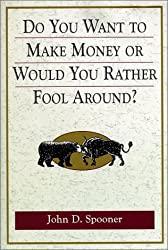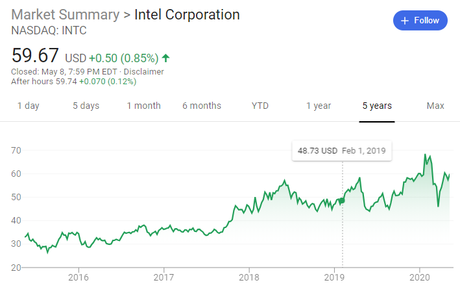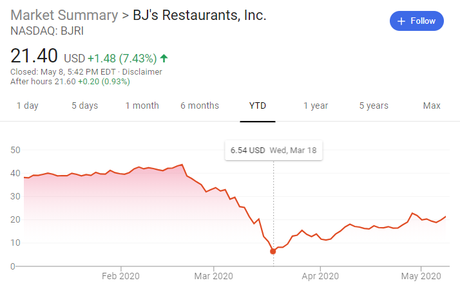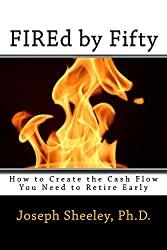A way to increase your returns when you invest through mutual funds is to periodically rebalance. This is where once or twice a year you sell off shares in funds that have done better than average and use the proceeds to buy shares in funds that have not done as well. For example, let’s say you have a stock and a bond fund and have a target to invest 60% in the stock fund and 40% in the bond fund. After a year where stocks do well, the stock fund is 70% of your portfolio and the bond fund is 30%. You would sell some shares of the stock fund and invest in the bond fund to bring yourself back to 60-40.
(Note, this site contains affiliate links. As an Amazon Associate I earn from qualifying purchases. When you click on an affiliate link and buy something, The Small Investor will get a small commission for the referral. You are charged nothing extra for the purchase. This helps keep The Small Investor going and free. I don’t recommend any products I do not fully support. If you would like to help but don’t see anything you need, feel free to visit Amazon through this link and buy whatever you wish. The Small Investor will get a small commission when you do, again at no cost to you.)
This is effective for two reason:
1) If you don’t do so, you have more exposure to stocks than you wanted, meaning that if bonds outperform stocks over the next period, you won’t do as well as you would have if you had reset your investments to have the level of diversification you had designed for your portfolio. If bonds do well compared to stocks, your gain will be less than it would have been if you had bought more bonds.
2) Because stocks have gone up more than bonds, it is more likely that stocks will be overpriced, relative to their long-term average levels, than will bonds. By selling the stock fund and buying the bond, you’re selling high, capturing a profit, and buying low, getting into the bond fund while prices are relatively low. This is not to say that the stock fund won’t continue to outperform the bond fund during any particular period, but it is less likely to do better if it has had a big gain compared to the bond fund. If you do this over and over again, on average, the bond fund will outperform the stock fund after periods like this. Moving money into the bond fund will, on average, lead to higher returns.

This is my first book, which covers all of the details of how to invest and the risks involved in investing in different types of securities. This is the information you need to know before buying individual stocks or even mutual funds. Even more than that, it tells you what you should be doing at each stage of life to come out financially independent before you retire. Click on the book image above to learn more about it and read an exert on Amazon.
Of course, rebalancing is more than moving from stocks to bonds. It is also moving from large stocks to small stocks, or domestic stocks to international stocks, or corporate bonds to government bonds, or even stocks and bonds to real estate through REITs. And there would be both domestic and international real estate REITs. In some cases you’ll have a fund manager taking care of some of this for you. For example, if you buy a total bond fund that invests in both corporate and government bonds, they will invest in a mixture of bonds. But other times you might invest in individual funds to give yourself more control over how much is allocated to each. Any of these sectors may be the big performer at any given time, so you want to make sure you have an appropriate amount invested in every sector.
You don’t want to rebalance too often. This is because segments of the market that start to do well tend to continue to do well for a period of time as people rush in to invest there. For example, if people see that stocks are doing well, they’ll start buying stocks, causing stock funds to rise even more. Eventually, however, a market leader will run out of steam and another segment of the market will take over. When this happens, you want to take some of your money out of the segment that has done well and put it into the new segment that is taking over as the leader. Rebalancing is a way to do this. For this reason, rebalancing once or twice a year, but no more often than that, will increase your returns over time.
Mixing index funds and individual stocks
A good portfolio will contain a mixture of index funds and individual stocks. Because they are your only choice, you’ll have mutual funds in your 401k. If you have a good 410k plan (which is totally up to your employer), you’ll be able to buy low cost index funds to maximize your returns. If you’re investing outside of a 401k, in a taxable portfolio or an IRA, you’ll be able to buy individual stocks in addition to index funds. If you feel comfortable doing so, and you feel that you can make selections that will outpace the markets, you can add some individual stocks to your investment mix to try to improve your returns. But beyond simply trying to beat the markets, there are a lot of other reasons for doing this as well. These include:
- With index funds, you’ll end up buying what everyone else is buying. Using individual stocks, you can add companies that aren’t in the mutual funds, yet. This means you can buy companies before everyone else in the world owns them, meaning that you can realize a good return as people buy in.
- If you’re buying many index funds right now, you’ll end up with a big position in technology, especially Apple, FaceBook, Alphabet/Google, NetFlix, and Ebay. If these aren’t the companies you want to overweight and/or you want more money invested outside of technology, you can choose individual stocks in things like banks, retail, and manufacturing that are in totally different industries to diversify your overall portfolio. This means you’ll have more balance than if you invest strictly through index funds.
- There are tax strategies that you can employ with individual stocks that you cannot with index funds. For example, if you have individual stocks in a taxable account, you can sell shares in which you have a loss and use them to offset your gains in taxable accounts and even some of your regular income. You can do this with index funds if you have a loss as well, but if you hold them for any appreciable time, you’ll probably only have gains in your funds. (There will be gains and losses with the individual stocks within the fund, but these are all down within the fund, so you can’t recognize them individually.) With stocks you’ll likely have a mix of gains and losses, so you can sell some losers and winners together when you need to raise cash, thereby eliminating your taxes on those gains.
What about rebalancing with individual stocks?
Individual stock investing is somewhat different than mutual fund investing. With mutual funds, particularly index funds, you’re “buying the market.” You’re basically saying, “I don’t know which companies will do well, so I’m just going to invest in all of them.” Your main concern is making sure you are truly investing in all areas of the market through the funds that you select.
With individual stock investing, you’re picking individual stocks and investing in specific companies that you think will outperform the markets. Your concern is finding the right companies to invest in and then buying enough of them to make a difference if you’re right about the companies. What the markets do is immaterial – you’re concerned about the health and growth of the company. You want to see increases in earnings, dividends, and sales. Your only concern about market movements and the price of your individual stocks is that a bear market may give you the opportunity to buy more and a bull market may let you sell off a few shares. Perhaps you’ll think that rebalancing doesn’t apply when it comes to individual stocks, but there are times when it applies here too.

Learn to be a better investor by reading J.D. Spooner’s Do You Want to Make Money or Would You Rather Fool Around? This book made me realize that I wasn’t buying enough shares in the companies I was investing in, meaning my wins were no where near as big as they should have been.
The biggest time that rebalancing makes sense with individual stocks is when we have big market sell-offs like we just had. During these sell-offs, everything will tend to decline, but some industries can be hurt more than others. For example, in the recent sell-off many restaurant stocks went down 70%, 80%, or even 90% from their pre-crash highs. Both bad companies, which will probably not survive the downturn, and good companies, which will survive and come out stronger than before, go down and hit prices not seen in years. At times like this, it can make sense to sell off some of the shares of stocks in industries that were not so badly hit and buy more shares in companies that were devastated.
For example, I had some shares of Intel that I had held for many years, buying in at around $30 per share. Before the crash, the shares were selling at almost $70 per share. During the crash, they fell back to about $47 per share, then rebounded to the mid-$50 range. So, I had lost some of my gain, but the decline was not super dramatic.

Meanwhile, a position I had in BJ’s Restaurants, International, which I bought in the mid $30’s, was absolutely devastated, falling into single digits when restaurants were forced to close their dine-in seating. They recovered a bit as well, to the $12 range, but they were still way down from where they were before the crash. Shares were definitely really cheap. If I were to just hold firm and leave my positions alone, I would expect the shares of BJ’s to eventually move up to the mid-$30’s again, but that could be a year or two later, I would just be breaking even on my investment over that period and losing all of that time.

So what I ended up doing was selling shares of Intel, locking in some of my gain there, and buying some shares of BJRI. This meant that when the shares of BJ’s rallied up to above $20 per share a couple of weeks ago, a lot more of my loss had been erased than would have if I had just held my positions as they were. I did this for a few of the positions that I held, selling stocks that didn’t fall too much and buying shares of stocks in industries that were especially hard hit. I was rebalancing from stocks in industries that were hit, but not too hard, and into industries where shares were dirt cheap because they were extremely out of favor.
Before you can start investing, you need money to invest. Please check out my latest book, FIREd by Fifty: How to Create the Cash Flow You Need to Retire Early

Rebalancing big winners
Another place where I frequently rebalance is when I have a big winner. While I purposefully take up big positions when I buy individual stocks so that I can make a big gains when I’m right and a stock performs well, I know that there is always a chance that an individual stock will suffer some huge blow that will cause it to lose most of it’s value or even shut down entirely. There are all sorts of examples of great companies that have fallen and then disappeared, so holding onto big winners for too long can result in you losing what would have been a huge gain that took decades to make.
To protect myself from such losses, I typically sell half of a position when I have a company that does so well that it reaches 5% of my total net worth. For example, if an individual had a net worth of $1M (including 401ks, other retirement accountants, the home, other real estate, and all other investments), under this plan he would sell half of a position if it reached $50,000 in value. This would cut the value of the position to $25,000. He could then use the $25,000 to buy additional shares in other companies that he owned, buy shares in new companies, and/or acquire shares of index funds. He would use this last option to diversify his overall portfolio and reduce the overall volatility of the portfolio as it became big. He uses the big potential gains of individual stocks to grow the portfolio, but then uses index funds with broad diversification to lock in those gains once he has them.
Rebalancing for tax loss harvesting
A final reason to rebalance, but that isn’t really rebalancing, is to take advantage of losses to reduce your taxes. If you’re buying individual stocks, you’ll always have some positions that just don’t work out. As stated previously, you can use losses in your portfolio to offset gains and even some of your regular income. When you have big market sell-offs, you can sell some of your losing positions and realize the loss, then use the loss to reduce your gains on other stocks, perhaps selling some shares in a stock you’ve held for a long time and on which you have a big gain. (Special note, this is my understanding of the tax laws, but they change all of the time and I could be wrong, so discuss the laws with a CPA or do your own research before making a move.)
The issue here is that if you’re investing in companies, rather than just buying shares based on prices, you’ll probably not want to sell shares in the companies that fall precipitously. In fact, you’ll probably be interested in buying more shares since the prices are so incredibly cheap, as discussed in the previous section. For example, I wanted to own BJ’s at $30 per share, so I really wanted to own BJ’s at $10 per share. But there is a way to take your loss and still stay invested.
One thought might be to sell the shares and then immediately buy them back. Alternatively, just to make sure that you don’t miss out on a lightning rally between the time you sell and buy, you might buy more shares and then sell the shares you originally owned. Don’t do this. The issue here is that this would cause what is called a “wash sale.” If you sell a stock at a loss but then buy the same stock back within 30 days, you are not allowed to recognize the loss on your taxes. The IRS is wise to this trick, so they’ve put rules in place to prevent you from doing it.
But you can take up a position in another company in the same industry that was also hit and is therefore inexpensive. You can then buy shares low and take advantage of the inevitable rally even if you can’t sell and then buy back into the same company. So, if you are holding shares of Coke and soft drink companies fall in price such that you’ve lost money, you can take that loss and immediately buy shares of Pepsi. This is not considered a wash sale because you did not buy the same things back.
You need to be careful, however, because it will be considered a wash sale if you buy something that is “substantially the same” as what you sold. For example, let’s say that you owned shares in an S&P500 fund issued by mutual fund company A, sell it at a loss, then immediately buy shares in an S&P500 fund offered by mutual fund company B. Here you have bought back substantially the same thing, so it would be a wash sale. If instead you bought into a NASDAQ fund, or even a generic Large Cap fund, you would be OK.
Have a burning investing question you’d like answered? Please send to[email protected] or leave in a comment.
Follow on Twitter to get news about new articles. @SmallIvy_SI
Disclaimer: This blog is not meant to give financial planning or tax advice. It gives general information on investment strategy, picking stocks, and generally managing money to build wealth. It is not a solicitation to buy or sell stocks or any security. Financial planning advice should be sought from a certified financial planner, which the author is not. Tax advice should be sought from a CPA. All investments involve risk and the reader as urged to consider risks carefully and seek the advice of experts if needed before investing.
